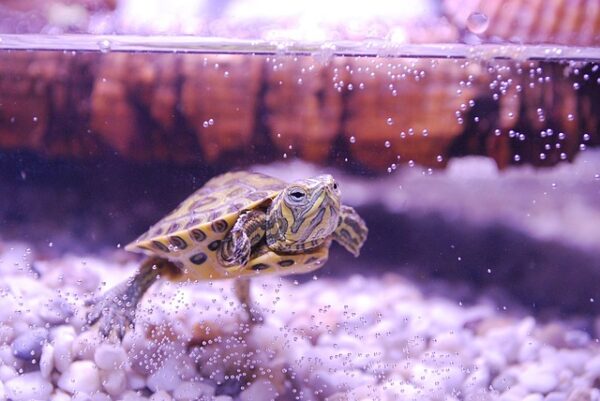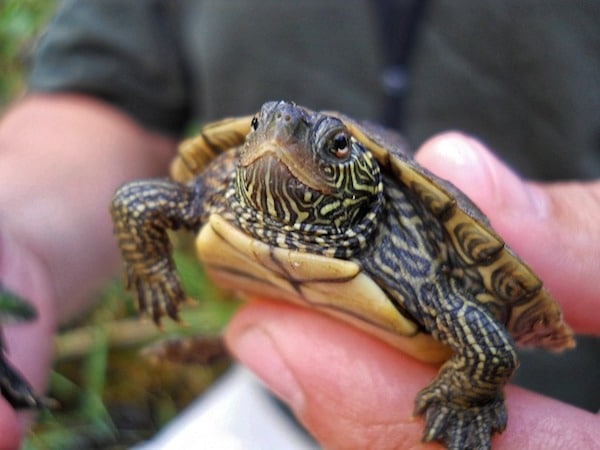
How long do pet turtles live? This is a great question to ask. When looking at getting a new pet, it’s important to know exactly how long you’ll be taking on the responsibility. Understanding the average age of your pet enables you to better provide long-term care for them.
The average age of pet turtles ranges from four to eight years. Most species reach adulthood in their late teens. However, some species may live up to twenty years old.
The life expectancy depends on the variety and the food that they eat. Shell type and the diet of the turtle also affect the life expectancy of a pet turtle.
Ultimately, most pet turtles can live for longer than 50 years. However, different types of turtles live for different amounts of years, so it’s essential to determine which pet turtle you have before setting a concrete age.
For pet owners, the average age of turtles is essential because it helps determine which type of pet they should get. However, the answer to the question “how old does a turtle grow?” can vary depending on the turtle species and its particular habitat.
For example, if a turtle is kept in captivity, it will generally grow old rather quickly. However, if the turtle is outdoors, it may stay tiny for many years before it begins to reproduce.
It takes about two years for a turtle to reach adulthood. The first year it stays in the wild is called the born stage because it is before this, new turtles begin to reproduce.
A turtle can remain in one of four shell types throughout its lifetime. These include the anemone shell, the coral shell, the acrylic shell, and the hogback shell. However, a turtle may only reproduce once in its lifetime, known as a breeder’s lifetime.
Turtles mature in different ways and at different ages. For example, an adult female may take one to two years to develop and have a long journey before reproducing. In contrast, a male turtle usually begins to breed after one year of age.
The exact age of a turtle can be determined more efficiently by a vet. For example, a baby turtle usually measures between eight and nine inches in length. The adult turtle may be up to ten inches in length.
Typical Lifespan of Turtles
The typical lifespan of turtles is between one to three years. In the wild, turtles breed once every year, but this varies significantly from year to year. In captivity, it can take a turtle twenty to thirty years to reproduce. However, most breeders keep records of the exact age of the turtles that are bred.
In general, turtles are less active once they are fully grown. For example, they are usually less acrobatic and do not undertake to leap and skip like a young turtle. These characteristics are generally a result of the large size of the turtle when it is fully grown.
Know the proper care to give at each year of life

When you purchase a turtle, you need to know the average age of the pet turtle to give him the proper care once you get him. Buying a turtle from an exotic source or a pet store can be dangerous. In addition, turtles kept in pet shops usually do not get the proper care they require once they are sold.
Some factors contribute to the question of how long a turtle will live. For example, species differ in their metabolism and immunity. Therefore, if you buy a turtle from an exotic source or a pet store, you should ask the owner about the species of the turtle and the age it has lived in the past.
If you plan to keep the turtle as a pet, you should buy one that can adapt to your home’s temperature and environment.
Hatch is another factor that you should consider when buying a turtle for your home. You must purchase a turtle that is easy to breed in captivity and is not too expensive.
It is also essential to understand the nesting habits of the species that you are planning to buy. For instance, some species do not lay eggs in water but lay them on dry land.
Another essential aspect to consider is the color or pattern of the pet turtle. Turtles are classified into two groups depending on the color of their shells.
For example, the Barne Nimbus is the most popularly sold species and comes in red, orange, yellow, green, and blue. However, you should note that even a small turtle species can turn out to be a different color from its actual shell.
Don’t Forget The Extras!
In addition, you should note that hatchlings need extra care. This means that you should buy a turtle that does not have a hard shell that is easily broken. As the baby starts to grow, it will have stronger shells and be easier to take care of.
To buy a cheap quality turtle, you can go for the species sold in pet shops. If you intend to buy a pet that is rarer and will require special handling, you can buy a baby or immature turtle.
Ultimately, knowing how long a turtle lives will ensure that you can properly give the best care you can provide for your turtle. Make sure you have everything you need, then bring your new pet friend home today!




